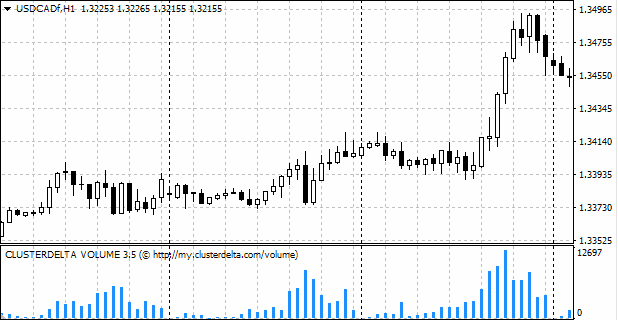Real and Tick Volume
You probably already know that Forex is the largest financial market in the world. But what exactly makes it the biggest? It’s the sheer volume of trades executed each day. Since Forex is an over-the-counter (OTC) market — meaning it’s not traded centrally on an exchange but rather through a global network of banks — it’s impossible to calculate its exact daily turnover. Still, estimates put it at over 5 trillion US dollars per day. An enormous figure, wouldn’t you agree? And it continues to grow, with experts predicting that the daily turnover of the currency market could eventually reach 10 trillion US dollars.As traders, we are drawn to this market for its liquidity and accessibility. With such massive intraday turnover, Forex offers exceptional liquidity. The market can easily "absorb" any order from a retail trader, regardless of size. But here’s the challenge: if the market is decentralized, who provides the volume data — and how? In the sections below, we’ll explore these questions and offer practical advice on how to access actual Forex volumes in trading.
What Is Volume in Trading
What is volume? Volume is the number of trading contracts executed during a specific period of time. It needs to be analyzed based on the particular trading strategy and the timeframe used. Volume is the fifth dimension of a price bar (candle): open, close, high, low, and volume. Always try to consider price together with traded volume.Why are volumes so important in chart analysis? For example, there are two price bars of similar size positioned close to each other on the chart. Without volume data, these bars would appear roughly the same to us. However, if it turns out that one bar traded 100 contracts and the other traded 500, our assessment would be very different, wouldn’t it? Therefore, it is crucial to see the real volumes traded within the bars (candles) on the timeframe you are analyzing.
How to See Real Volume on a Forex Chart
On stocks, futures, and similar instruments, volume data is provided by the exchange where the asset is traded. Forex, as we mentioned earlier, is an over-the-counter market traded through a network of banks connected via electronic systems like ECN. There is no single exchange that consolidates all Forex volume data. It’s important to note that some major brokers (such as OANDA, FXCM, Forex.com) display real Forex volumes, but only for trades executed through their own platforms, not for the entire market. You should understand that this represents just a drop in the ocean. So, what can a Forex trader do in this case?There is essentially only one reliable solution — to trade the Forex market while analyzing volumes of the corresponding currency futures traded on the CME (Chicago Mercantile Exchange). The Forex currency pair and the same-named futures contract on the CME move almost identically, with minor differences in price due to contango and backwardation.
To see futures volumes, you have two options:
- View futures quotes and volumes on an exchange platform (such as ATAS or Thinkorswim) while trading in your Forex terminal.
- Use a paid volume indicator from ClusterDelta, which streams real futures volumes for currency pairs directly into MT4 and MT5.
The first option is free but less convenient, while the second is paid but much more user-friendly. The choice is yours.

Tick Volume
Tick volume is popular among brokers who cannot provide access to real volumes, as well as among traders unwilling to pay for such data.

What Is Tick Volume
Tick volume is basically a tick counter — it counts every price change, and nothing else. It has nothing to do with actual traded volumes. Tick volumes aren’t provided externally; instead, they are calculated by the tick counter within your trading terminal!At the start of the formation of a price bar (candle), the tick counter counts how many times the price changes within that bar. As a result, you see the number of ticks in the bar.
However, within a single tick, 1, 10, 100, or even 1000 contracts can be executed, but it will still count as just one tick. Therefore, tick volume is not the same as real volume, and you shouldn’t substitute one for the other.









 Reviews:
Reviews: 
 Reviews:
Reviews: 
 Reviews:
Reviews: 

 Ru
Ru